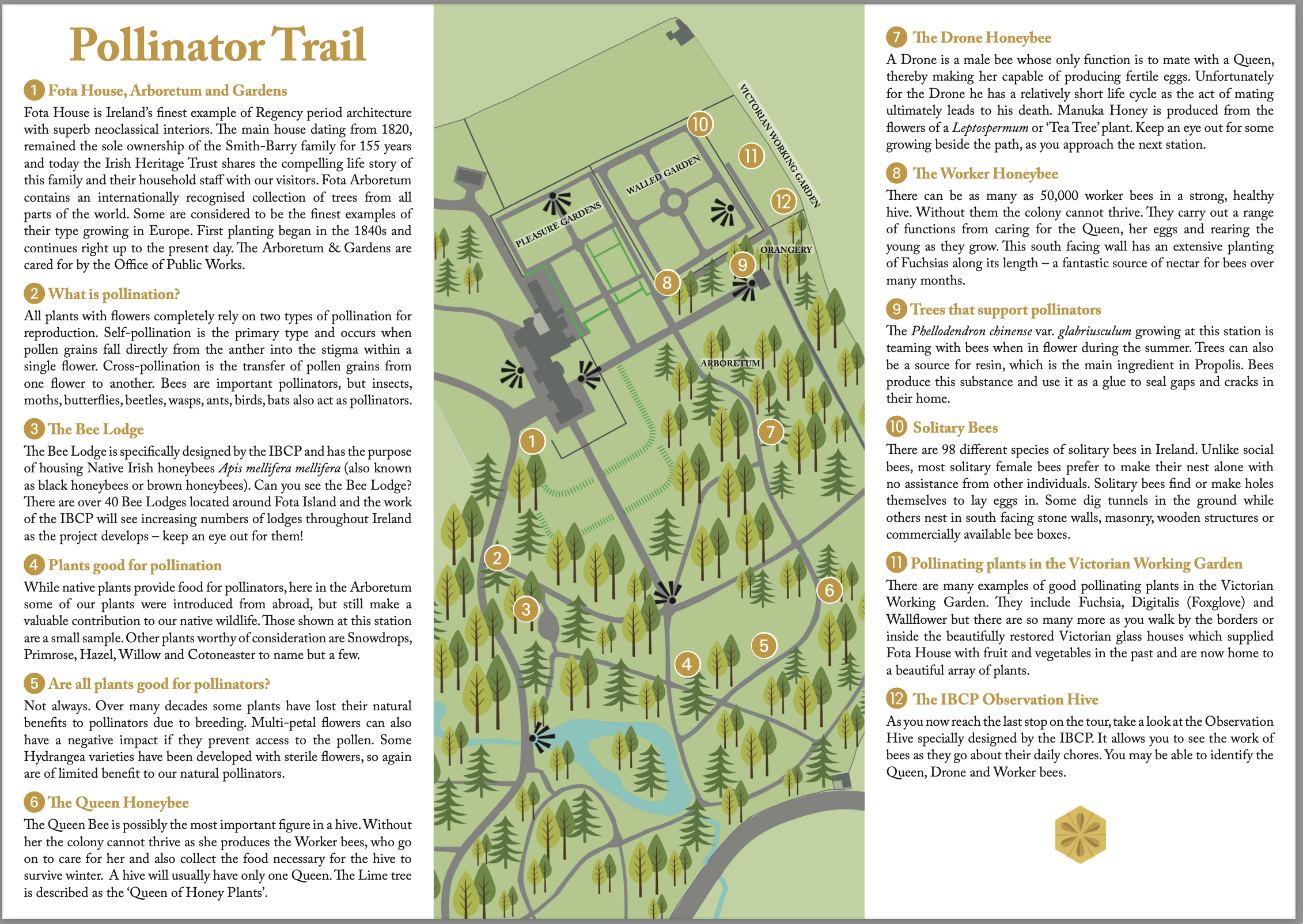Fota Pollinator Trail – Station 08
The trail now travels past this south facing wall, which has an extensive planting of Fuchsias growing along its length. They are native to Central & South America, but some species are now well established in hedgerows throughout Ireland. They are a fantastic source of nectar for bees. Also take note of the tall Echium pininana, native to La Palma in the Canary Islands and loved by bees when in flower. They are biennial, taking two years to come to flower.
The Worker Bee
There can be as many as 50,000 Worker bees in a strong colony. Without workers the hive cannot survive. Worker bees are all Female but they are sterile and cannot mate.
Once a Queen has laid an egg it will take 21 days for a Worker bee to emerge as an Adult. From this point the Worker bee’s roles are wide-ranging.
Firstly, they clean and polish cells for the Queen to lay more eggs.
Secondly, they keep new brood (eggs and larvae) warm. These have to be maintained at a temperature of 32-36 degrees centigrade (ideally 34.5 Degrees Centigrade).
Then they feed older Larvae with Brood Food, Pollen and Nectar. The Brood Food comes from their Hypopharangeal Glands (inside their heads) and Mandibular Glands (inside their jaws). They get the Pollen and Nectar from foraging Worker Bees. At the same time they leave the hive for the first time. On these flights they get the know the location of their hive and its surrounds. They also cleanse themselves getting rid of all the waste that has built up in their bodies since they were formed.
Next they feed younger larvae with Brood Food only.
Their next roles involve a range of activities like changing Nectar (which is collected from flowers and trees) to Honey, packing pollen (also from flowers and trees) into cells, removing deformed larvae from the hive, ejecting dead or dying bees form the hive and filling gaps with Propolis (collected from trees).
Finally, they go out foraging for Nectar, Pollen, Water and Propolis. They do this for the rest of their lives which can be as short as 30 days in the summer when they are continuously flying and as long as 6 months in the Winter.



